As you look for cheeses to add to your epic cheese board, you may have spotted camembert and brie in the cheese section and wondered…what’s the difference? When it comes to camembert vs brie, there are a few important difference to note. We’re answering it all here!
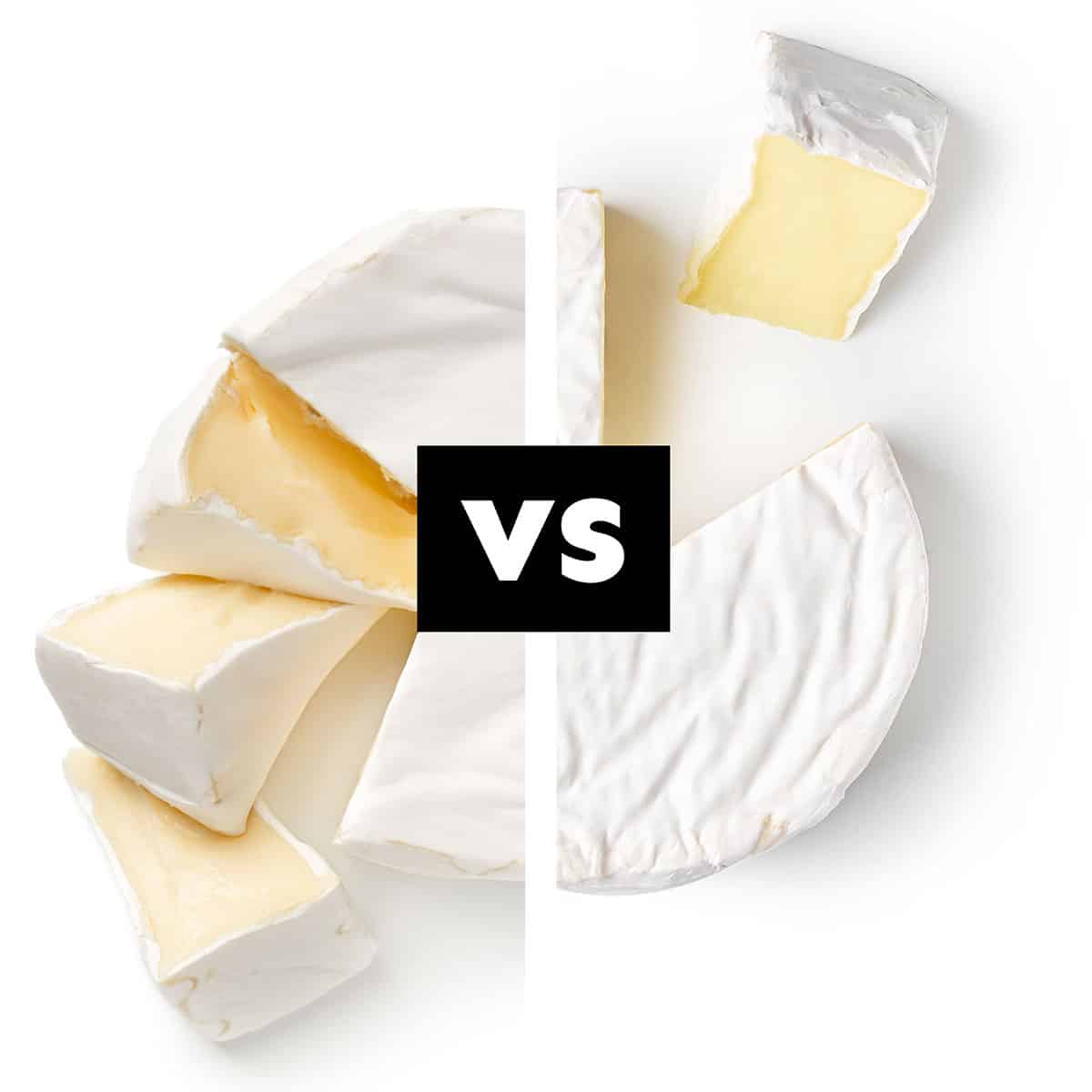
Camembert vs. Brie
- Origin and History
- Appearance
- Flavor and Texture
- Culinary Uses
- Varieties
- Frequently Asked Questions?
Origin and History
Camembert Cheese: Camembert is a famous French soft cheese with a rich history that dates back to the late 18th century. It originated in the Normandy region of France, particularly in the small village of Camembert. A form of this cheese was traditionally made by local dairy farmers, but it gained widespread popularity thanks to a French cheesemaker named Marie Harel.
Legend has it that she sheltered a priest during the French Revolution, who in turn shared with her a new recipe for making the cheese. This recipe is said to have contributed to the unique taste and texture of Camembert as we know it today. And not surprisingly, there is now a camembert museum in the small Normandy village of Vimoutiers.
Brie Cheese: Camembert’s older sibling Brie originated in the Île-de-France region of France (near Paris), particularly from the historical province of Brie. It was initially created in the 8th century by monks and was long considered a luxury item, primarily enjoyed by the French nobility.
Appearance
Camembert and brie are actually quite similar, and that begins with appearance.
Camembert: Camembert is recognizable by its relatively soft and creamy interior encased in a white, bloomy rind. The rind is often described as velvety and snowy, which results from a natural mold called Penicillium candidum that forms during the cheese-making process.
The cheese itself has a round shape, with a diameter of about 4-5 inches and a height of 1-2 inches. It is made and sold in cheese wheels typically weighing about 8 ounces.
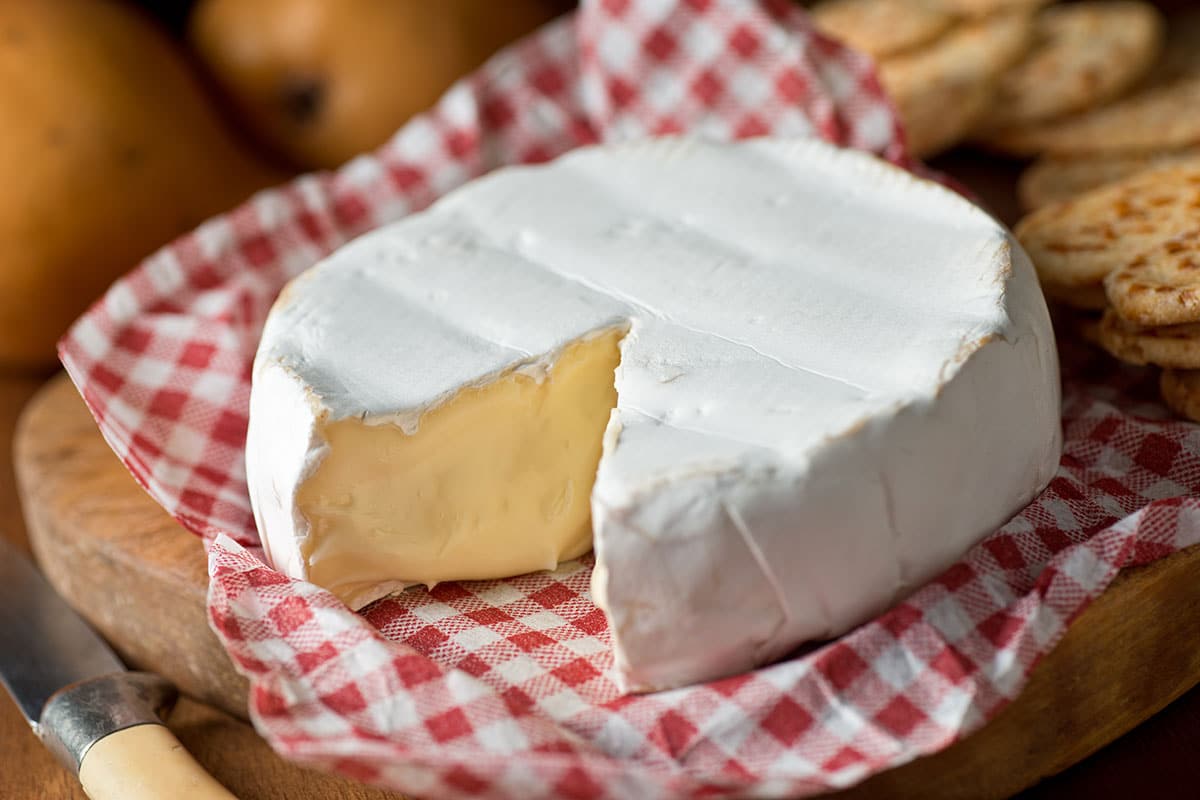
Brie: Brie cheese typically comes in round or wheel-like shapes, but a brie wheel is larger than a camembert wheel at about 2 pounds. So, you will generally see brie sold in wedges vs whole wheels like camembert.
Like camembert, brie is covered by a soft rind, and the interior ranges in color from pale ivory to pale yellow as it matures. The rind might develop slight brownish patches, which are a normal part of the aging process.
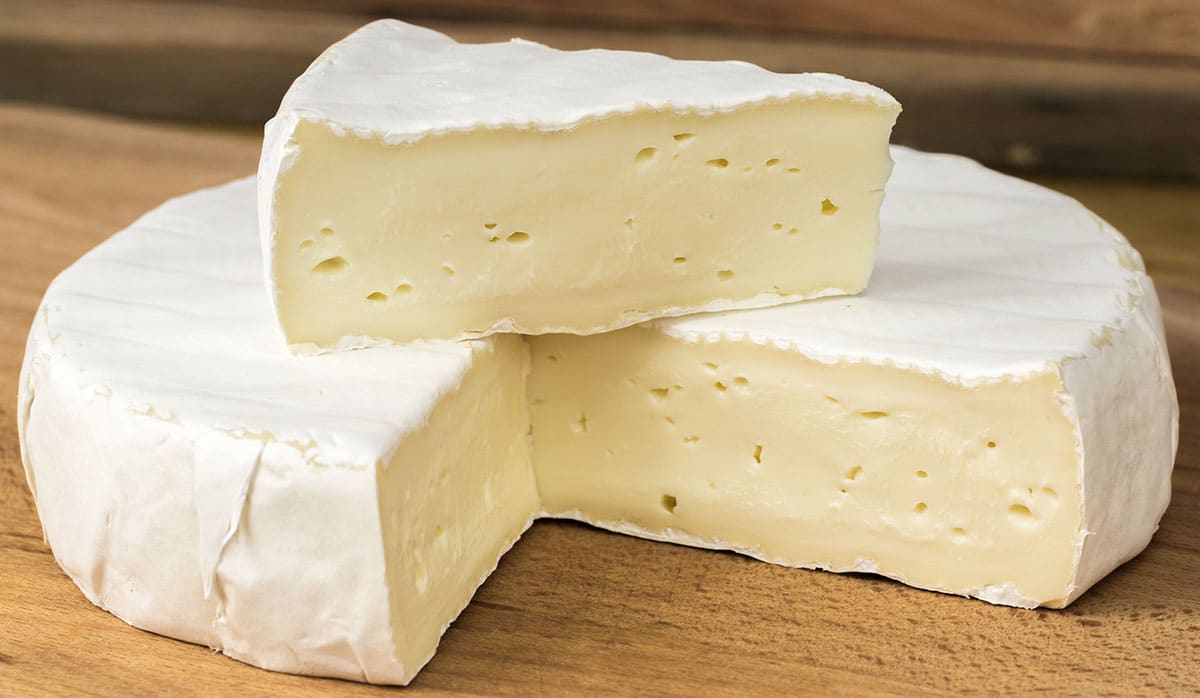
Flavor and Texture
Which cheese you prefer is just a matter of personal preference. If you prefer a stronger flavor with a more pungent aroma, you will likely prefer camembert. If you prefer a milder flavor with a creamy texture, then brie will likely be your preference.
Camembert: Camembert is known for its distinctive flavor that is both rich and earthy. When young, the cheese has a firmer texture and a mild, buttery taste. As it ages, the flavor intensifies, becoming more complex with hints of mushroom and sometimes even garlic-like notes.
Brie: When young brie has a firmer texture towards the center, gradually becoming creamier and runnier as it ages. The flavor is delicate and buttery, often accompanied by earthy, mushroom-like undertones. The edible rind adds a slightly tangy note to the overall flavor.
Culinary Uses
How to Eat Camembert: This cheese is incredibly versatile and can be enjoyed in various ways. It’s often served as a table cheese (at room temperature), accompanied by crusty bread, fresh fruits, and perhaps a glass of wine. It’s also a popular cheese for baking, particularly in dishes like baked camembert with garlic and herbs, in which the cheese is baked in its wooden box until it becomes gooey and luscious.
How to Eat Brie: Brie cheese can mostly be used in the same ways you would camembert. Like camembert, it is often served as an appetizer or dessert cheese, paired with fruits, nuts, and crusty bread. Brie is made with cream added to its mixture giving it a higher fat content than camembert. This makes it a bit creamier and more spreadable than camembert.
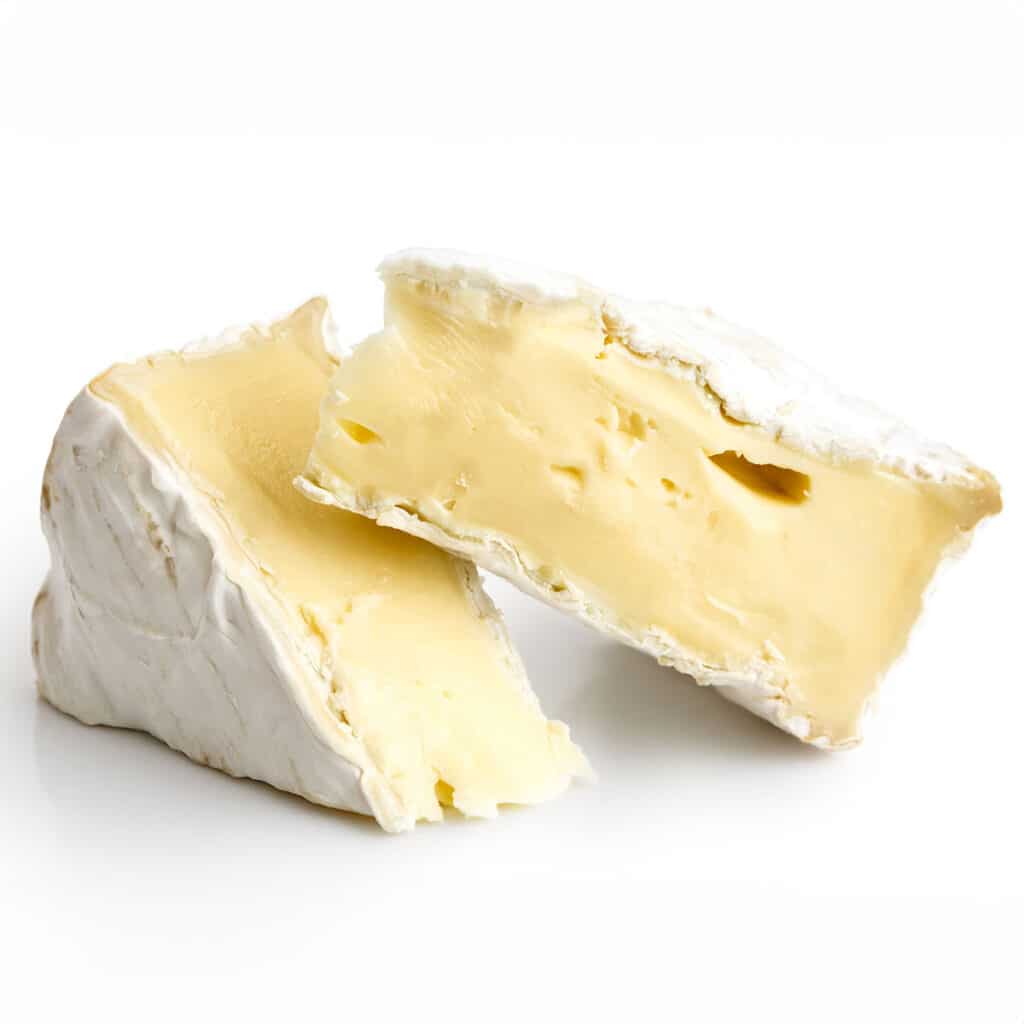
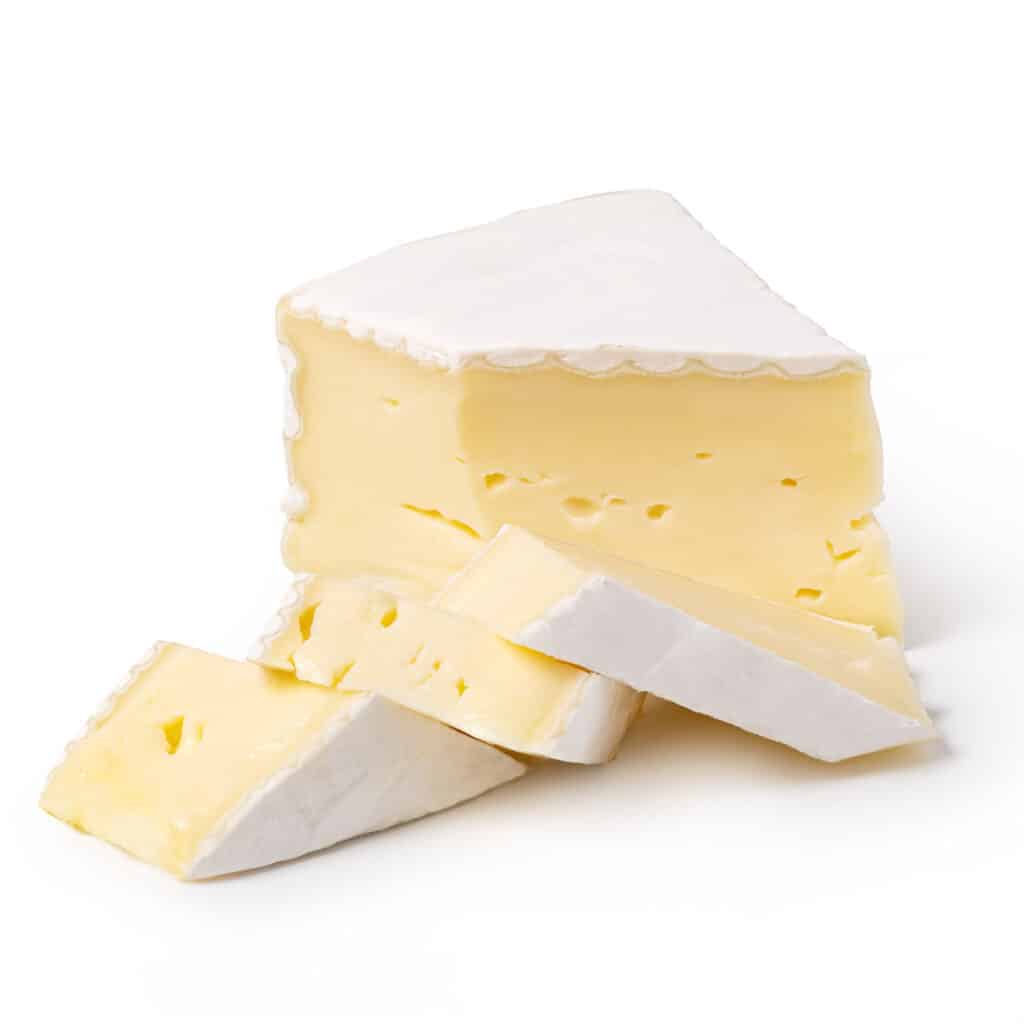
Varieties
Varieties of Camembert
Most Camembert is not actually made in Camembert, France. This is because for almost 200 years, camembert did not get an important designation known as an AOC (appélation d’origine controlée). Think of it as a patent but for cheese, butter, and wine. An AOC was finally granted for Camembert in 1983, so if you want to ensure you are getting the real thing look for the name Camembert de Normandie.
Because of this, there are many varieties of camembert you may com across!
Traditional Camembert: This is the classic version of Camembert cheese. It has a soft, creamy texture and a distinctive aroma. The flavor is buttery, earthy, and sometimes slightly tangy. Traditional Camembert is typically aged for around three weeks to develop its characteristic flavors and textures.
Camembert de Normandie: This is often considered the most authentic and traditional type of Camembert. It’s made using unpasteurized cow’s milk and follows strict guidelines for production. Camembert de Normandie has a rich, complex flavor profile and a creamy texture. It’s aged for at least three weeks and is turned and cared for during this time to encourage proper ripening.
Triple Cream Camembert: Some producers create a luxurious variation of camembert by adding extra cream to the milk during production. This results in an even creamier texture and a more indulgent flavor. Triple Cream Camembert is often richer and more decadent than the traditional variety.
Flavored Camembert: To add extra dimensions to the cheese, some producers offer flavored camembert varieties. These can be infused with herbs, spices, truffles, or other flavorings. These additions complement the creamy base of the cheese and provide an interesting twist.
Varieties of Brie
True brie is made only in specific regions of France, but brie variants are now made across the world. Below are a few of the most popular varieties produced in accordance with the AOC protection afforded the cheese.
Brie de Meaux: Often referred to as the “King of Cheeses,” Brie de Meaux is one of the most famous varieties of Brie. It has a creamy texture and a strong, earthy flavor. This cheese is protected by the French AOC (Appellation d’Origine Contrôlée) designation, which ensures that it is produced in a specific region and according to traditional methods.
Brie de Melun: Another AOC-protected variety, Brie de Melun is known for its slightly smaller size and more intense flavor compared to Brie de Meaux. It has a reddish-orange rind and a creamy interior, and the flavor becomes more pungent as it ages.
Double Brie: This type of brie is made by layering two rounds of brie with a layer of cream in between. It results in an even creamier texture and a richer flavor. Double brie is often sold in special packaging that keeps the layers separated.
Triple Crème Brie: Triple Crème Brie takes the creaminess of regular brie to the next level by adding extra cream during the cheese-making process. This results in a very rich and decadent cheese with a butterfat content of around 75%. The flavor is mild and buttery.
Brie Noir: Also known as “Black Brie,” this variety is aged longer than traditional brie, resulting in a darker rind and a more pronounced flavor. The longer aging process gives the cheese a stronger, nuttier taste.
Brie aux Truffes: This is a luxury version of brie that’s infused with truffle pieces or truffle oil. The earthy, aromatic flavor of truffles complements the creamy texture of brie, creating an unique and indulgent cheese.
Brie en Croûte: This is a baked version of brie where the cheese is wrapped in puff pastry and often filled with ingredients like nuts, fruits, or preserves before baking. As the pastry bakes, the cheese inside becomes gooey and delicious.
Frequently Asked Questions?
How long are Brie and Camembert aged? Camembert is usually aged about 3 weeks. Brie is aged 4 weeks or more depending upon the variety. The aging process gives these cheeses their flavor and texture.
Can you eat the rind on brie and camembert? Absolutely, but with one possible caveat. If you are allergic to penicillin, you should avoid the rinds. The rind forms because of the mold Penicillium Camemberti which is used in the production process. This mold grows on the cheeses while aging creating the thick white later that actually serves to protect the soft inner cheese.
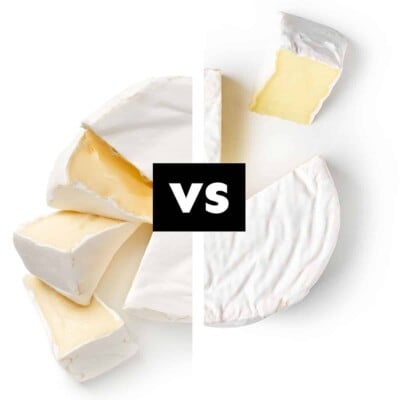
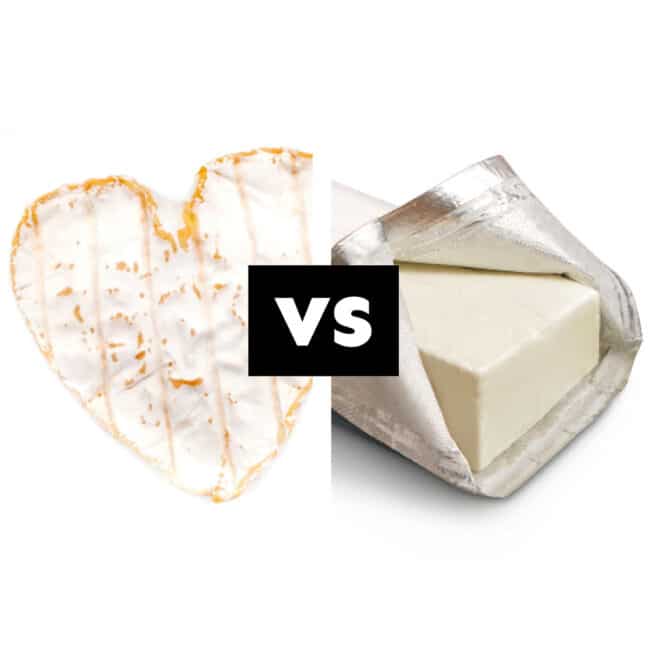
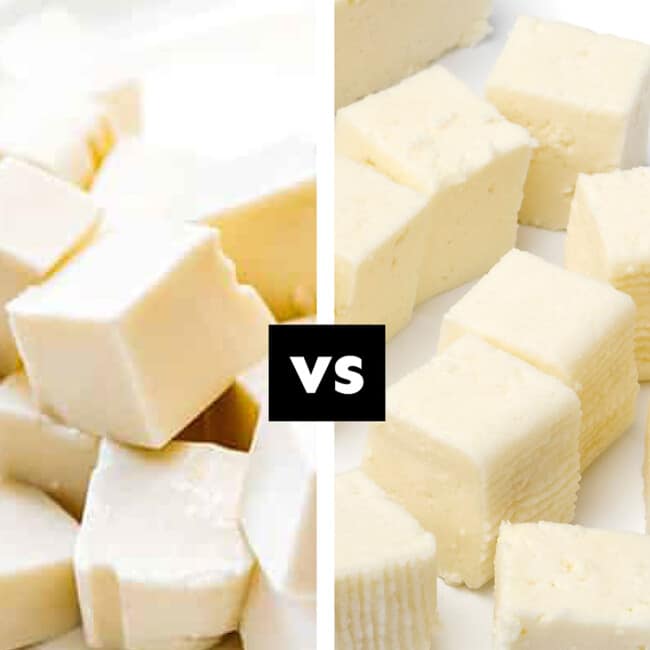
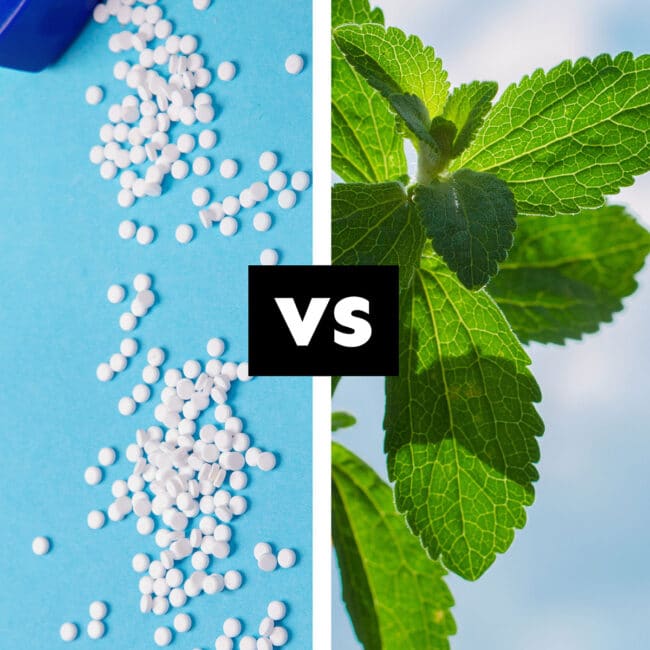

Leave a Comment